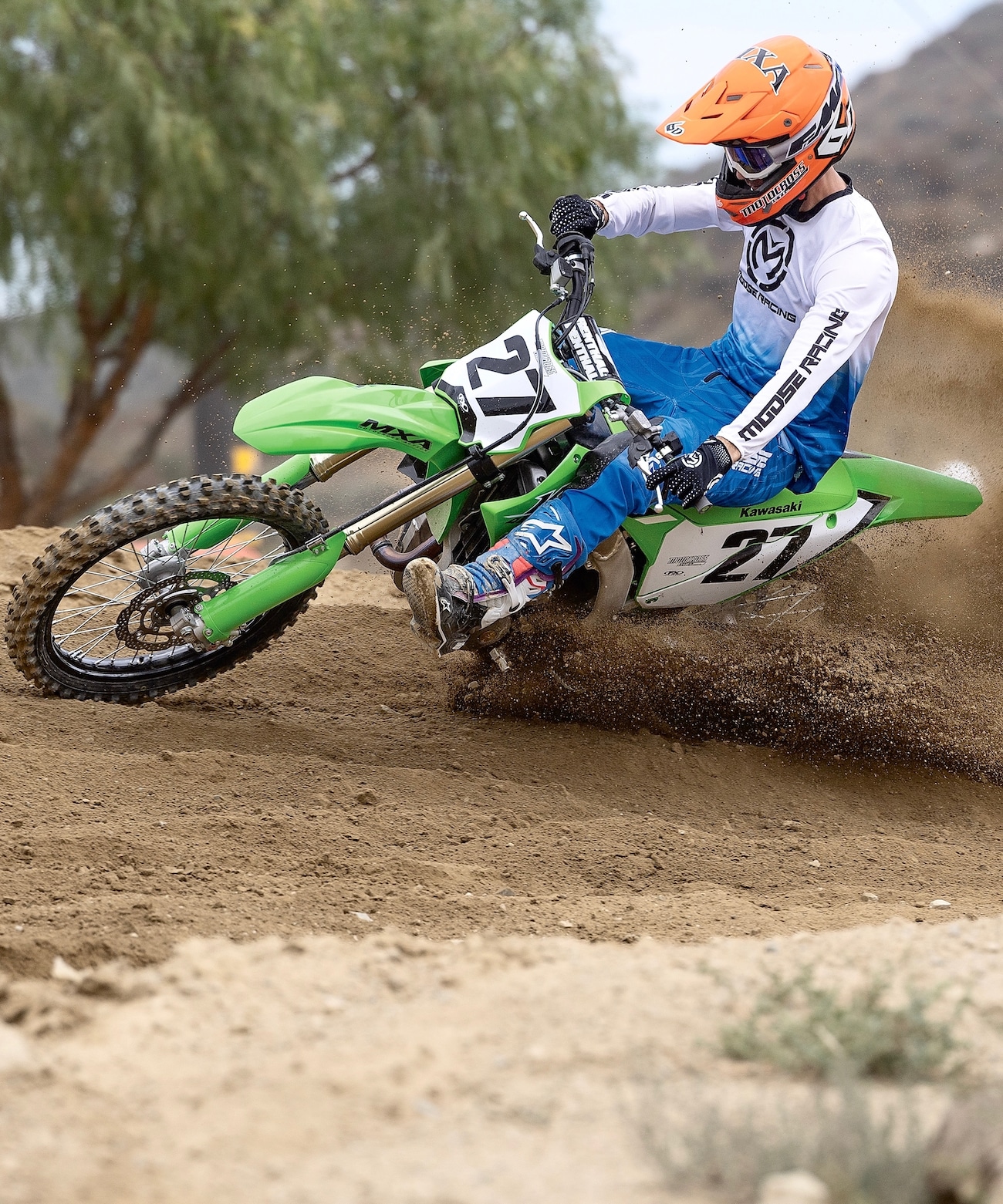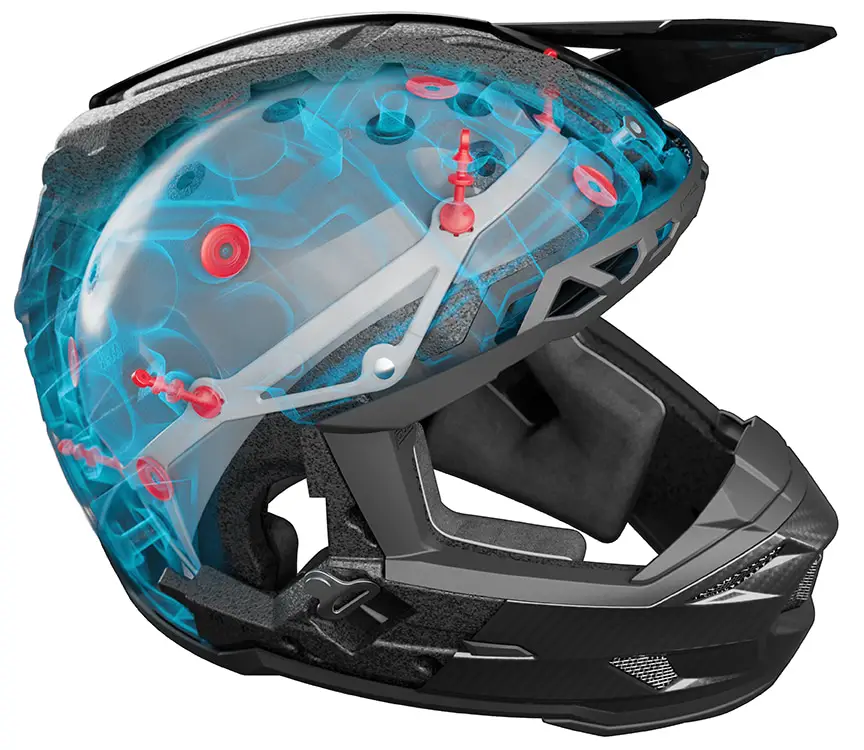TEN THINGS ABOUT 6D HELMET’S NEW ATR-3
(1) History. 6D Helmets was founded in 2011, and two years later they released their original ATR-1 helmet, a revolutionary innovation in helmet design that forced everyone to rethink helmet safety. 6D Helmet’s ATR-2 took another huge step forward when it launched in 2018. After five years of R&D, the ATR-3 builds on the strengths and corrects the weaknesses of the previous two models.
(2) ODS. The omni-directional suspension (ODS) technology is an active, in-helmet system that reduces the force of energy transferred to the brain in a crash. Eleven years ago, 6D was the only helmet manufacturer with specific technology for managing rotational impacts. The ATR-1 utilizes 27 dampers. The ATR-2 uses 11 dampers, and now the ATR-3 uses only six redesigned dampers. Previously, the dampers were glued into the helmet. Now, there’s no glue in the system, which saves time and money and improves quality.
(3) Dampers. The dampers control the displacement of rotation between the inner and outer liner. Their primary job is to manage displacement under loading and return the helmet to its natural position. The ATR-3’s dampers are completely redesigned, playing a different role from before. The newer design is freer and allows displacement in the liners more easily. The dampers are longer and can stretch more, increasing the travel of the suspension.
(4) Testing. 6D took the ATR-3 helmet to third-party testing labs to compare the new design to their own previous designs and the designs of their competitors. The goal is to flatten the curve of the graph, protecting the brain from a spike in energy transfer. At slow speeds, the ATR-3 helmet ranked close to the ATR-2, and, in high-speed impacts, the ATR-3 did significantly better than the ATR-2. In both situations, the 6D ATR-3 was far ahead of the competition.
(5) Fitment. When you set the ATR-2 and ATR-3 side by side, they look very similar in size. The shape is slightly different, with the ATR-2 having more mass at the back and the ATR-3 having a more modern style. The padding inside the ATR-3 is more comfortable as well, with added padding at the top of the eye port for protection and comfort.
 (6) Rebuildable. 6D is the only brand able to rebuild your helmet after a crash. The inner EPS (expanded polystyrene) foam is specifically designed to offer maximum protection in a single impact, and thanks to 6D, it can be easily inspected and replaced. Of course, the shell must pass inspection for the helmet to be considered eligible for a rebuild. It costs $132.00 for the inner EPS assembly and an extra $50.00 for a new chin bar (if required).
(6) Rebuildable. 6D is the only brand able to rebuild your helmet after a crash. The inner EPS (expanded polystyrene) foam is specifically designed to offer maximum protection in a single impact, and thanks to 6D, it can be easily inspected and replaced. Of course, the shell must pass inspection for the helmet to be considered eligible for a rebuild. It costs $132.00 for the inner EPS assembly and an extra $50.00 for a new chin bar (if required).
(7) Ventilation. One complaint about the ATR-2 was the lack of ventilation. The new ATR-3 comes with more vent channels for radically improved airflow, keeping your head cooler and reducing sweat in the goggles. If you’re getting roosted a lot, we recommend cleaning the helmet gently with water or compressed air. Don’t worry, the EPS and EPP foam layers don’t absorb water.
(8) Eject system. AMA pro riders are required to wear a “Hats Off” eject device in their helmets. It’s a small airbag that can be inflated to help medics remove the helmet after a serious crash. The new ATR-3 comes with a specific pocket for the airbag to fit into; however, the average rider won’t benefit from it unless your local track’s paramedics are trained and equipped with the pump required to inflate it.
(9) Options. The ATR-3 is available in three solid colors and five different graphics with 17 colors. The solid white, black and carbon helmets retail for $759.95, while the other graphics are $795.95.
(10) Extras. The new ATR-3 comes with a clear plastic piece that attaches to the visor and extends it by 3 inches for riding in rain/mud. The new chin straps use a magnet instead of a button for convenience. Plus, the nose guard is easily removable, and there are pockets for integrating helmet speakers.







Comments are closed.